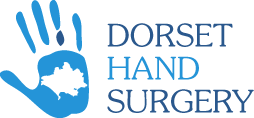Dequervain’s Tenosynovitis
De Quervain’s Tenosynovitis was named after a Swiss surgeon, who first described the condition in 1895. It is an inflammatory condition affecting the tendons that glide through the first dorsal extensor compartment (namely the abductor pollicis longus and the extensor pollicis brevis) In De Quervain’s, the synovial lining of the compartment can become inflamed and thickened leading to localised swelling and pain with thumb movements.
Who gets it?
Diagnosis
Treatment options
Treatments for Dequervain's Tenosynovitis are often non surgical. Find out more:
Rest – The use of a splint to immobilise the wrist. This helps to limit the aggravating movements of the tendons through the inflamed sheath.
Anti-inflammatory medication – Either tablets or topical gel can be utilised to help reduce pain and inflammation.
Steroid Injection – Injection into the inflamed sheath can be very effective in relieving symptoms, with 70% of patients deriving benefit. This is often combined with other measures.
How to inject:
A long orange needle is used, with 1-2mls of 0.5% Marcain and 10-20mg Kenalog. The 1st dorsal extensor compartment is identified. Trace the two tendons from the base of the thumb towards the level of the radial styloid, where they enter the sheath. This is often made easier by asking the patient to extend and abduct the thumb. Inject at this point aiming proximally along the tendon sheath (see also injection information section).
Hand Therapy – The Hand Therapist will undertake techniques such as massage, ultrasound and stretching exercises to encourage normal gliding of the tendons.
Surgery
Surgery can be performed under local or general anaesthetic. A small 2 cm incision is made over the affected tendons and the tight sheath is divided to allow free passage of the tendons. The stitches are often dissolvable. A supportive dressing is applied, which aims to allow light hand and finger use. Sometimes a Plaster of Paris will also be applied. The dressings will be removed at 10-14 days and the patient will then be referred to the Hand Therapist to commence an exercise programme.


